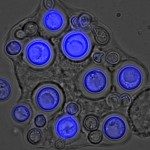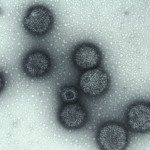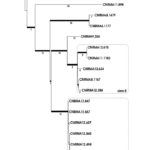Lien vers Pubmed [PMID] – 25516620
Lien DOI – e02309-1410.1128/mBio.02309-14
mBio 2014 Dec; 5(6):
Rapidly fatal cases of invasive fungal infections due to a fungus later identified as Saprochaete clavata were reported in France in May 2012. The objectives of this study were to determine the clonal relatedness of the isolates and to investigate possible sources of contamination. A nationwide alert was launched to collect cases. Molecular identification methods, whole-genome sequencing (WGS), and clone-specific genotyping were used to analyze recent and historical isolates, and a case-case study was performed. Isolates from thirty cases (26 fungemias, 22 associated deaths at day 30) were collected between September 2011 and October 2012. Eighteen cases occurred within 8 weeks (outbreak) in 10 health care facilities, suggesting a common source of contamination, with potential secondary cases. Phylogenetic analysis identified one clade (clade A), which accounted for 16/18 outbreak cases. Results of microbiological investigations of environmental, drug, or food sources were negative. Analysis of exposures pointed to a medical device used for storage and infusion of blood products, but no fungal contamination was detected in the unused devices. Molecular identification of isolates from previous studies demonstrated that S. clavata can be found in dairy products and has already been involved in monocentric outbreaks in hematology wards. The possibility that S. clavata may transmit through contaminated medical devices or can be associated with dairy products as seen in previous European outbreaks is highly relevant for the management of future outbreaks due to this newly recognized pathogen. This report also underlines further the potential of WGS for investigation of outbreaks due to uncommon fungal pathogens.Several cases of rapidly fatal infections due to the fungus Saprochaete clavata were reported in France within a short period of time in three health care facilities, suggesting a common source of contamination. A nationwide alert collected 30 cases over 1 year, including an outbreak of 18 cases over 8 weeks. Whole-genome sequencing (WGS) was used to analyze recent and historical isolates and to design a clade-specific genotyping method that uncovered a clone associated with the outbreak, thus allowing a case-case study to analyze the risk factors associated with infection by the clone. The possibility that S. clavata may transmit through contaminated medical devices or can be associated with dairy products as seen in previous European outbreaks is highly relevant for the management of future outbreaks due to this newly recognized pathogen.





